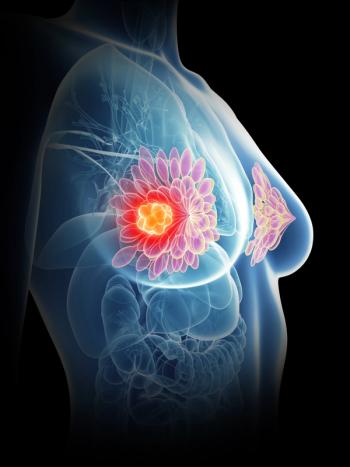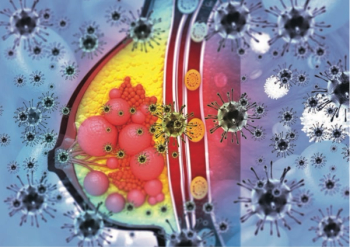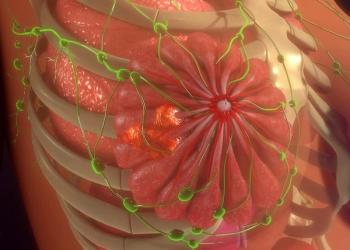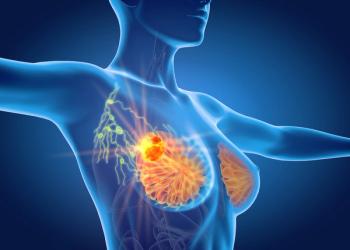
Oncology NEWS International
- Oncology NEWS International Vol 7 No 12
- Volume 7
- Issue 12
Dose Intensity, Density Increased in Breast Cancer
FLORENCE, Italy-Boosting both the dose intensity and dose density of adjuvant chemotherapy significantly prolongs survival in women with high-risk breast cancer, according to a multicenter trial presented at the First European Breast Cancer Conference. “A twofold dose increase in epirubicin is possible with G-CSF [Neupogen] support,” said Dr. G. Konecny of the University of Munich. “It is a feasible outpatient treatment, quality of life is good during treatment, and treatment duration is especially short.”
FLORENCE, ItalyBoosting both the dose intensity and dose density of adjuvant chemotherapy significantly prolongs survival in women with high-risk breast cancer, according to a multicenter trial presented at the First European Breast Cancer Conference. A twofold dose increase in epirubicin is possible with G-CSF [Neupogen] support, said Dr. G. Konecny of the University of Munich. It is a feasible outpatient treatment, quality of life is good during treatment, and treatment duration is especially short.
The trial recruited 182 breast cancer patients between the ages of 18 and 65 who either had at least 10 positive nodes or extracapsular involvement, or both. In such patients, Dr. Konecny said, the outcome following standard cyclophosphamide/methotrexate/fluorouracil (CMF) treatment is usually disastrous.
Study participants were randomly assigned to either four biweekly cycles of dose-intensified epirubicin/cyclophosphamide (DI-EC), 120/600 mg/m² on days 2 to 12, with G-CSF support, or to four triweekly cycles of EC, 90/600 mg/m², followed by three cycles of CMF, 500/40/600 mg/m².
We included two concepts in our scheduleincreasing the dose intensity by increasing the epirubicin dose from 90 to 120 mg/m2, and increasing the dose density by shortening the intervals between treatments, Dr. Konecny said. All patients underwent radiotherapy as well, and those with estrogen-receptor-positive tumors also received tamoxifen (Nolvadex) after chemotherapy.
The investigators were able to reach 92% of the planned dose intensity with the DI-EC regimen and 97% of the planned dose intensity with EC/CMF therapy. The total duration of chemotherapy, however, was only 7.6 weeks in the dose-intensified arm, compared with 24 weeks in the standard arm.
We achieved a mean disease-free survival of 37 months with standard CMF therapy and 44 months with intensified therapy, and this difference was significant, Dr. Konecny reported.
He observed that, after a median follow-up of 24 months, only 13 of 91 women treated with dose-intense, dose-dense therapy experienced a recurrence, compared with 25 of 83 patients who received standard therapy. The follow-up period was too short to demonstrate an improvement in overall survival, however.
Dr. Konecny and his colleagues also confirmed that c-erbB2 (also known as HER2) overexpression had a detrimental impact on survival. In contrast to previous reports, however, c-erbB2-positive patients benefited less from anthracycline dose intensification than did their c-erbB2-negative counterparts.
Patients assigned to dose-intensified therapy with G-CSF support actually showed higher mean white blood cell counts than those treated with standard therapy. However, platelet counts were lower and anemia was more frequent in the dose-intensified arm.
Articles in this issue
about 27 years ago
Long-Term Adjuvant Tamoxifen Urged for Low-Risk Breast Cancerabout 27 years ago
EORTC DCIS Study Confirms Recurrence Reduction With RTabout 27 years ago
James Cancer Center Joins NCCN Outcomes Databaseabout 27 years ago
Managed Care Sees Need for National Guidelines, Accreditationabout 27 years ago
Advisory Panel Recommends Approval of Vysis HER2 Testabout 27 years ago
Drinking Tea After Smoking May Reduce Oxidative Stressabout 27 years ago
Use Special Skills, Tools to Assess Pain in Children, Elderlyabout 27 years ago
Good Response Rates With Radiolabeled Anti-CD20 MoAB in NHLabout 27 years ago
Tobacco Industry Settles With StatesNewsletter
Stay up to date on recent advances in the multidisciplinary approach to cancer.

















































































